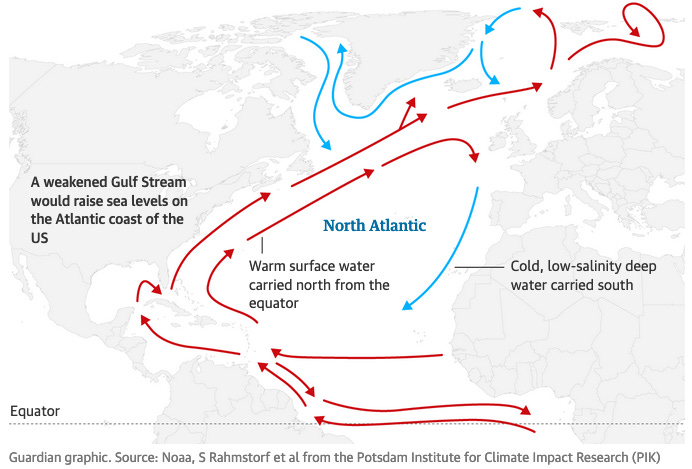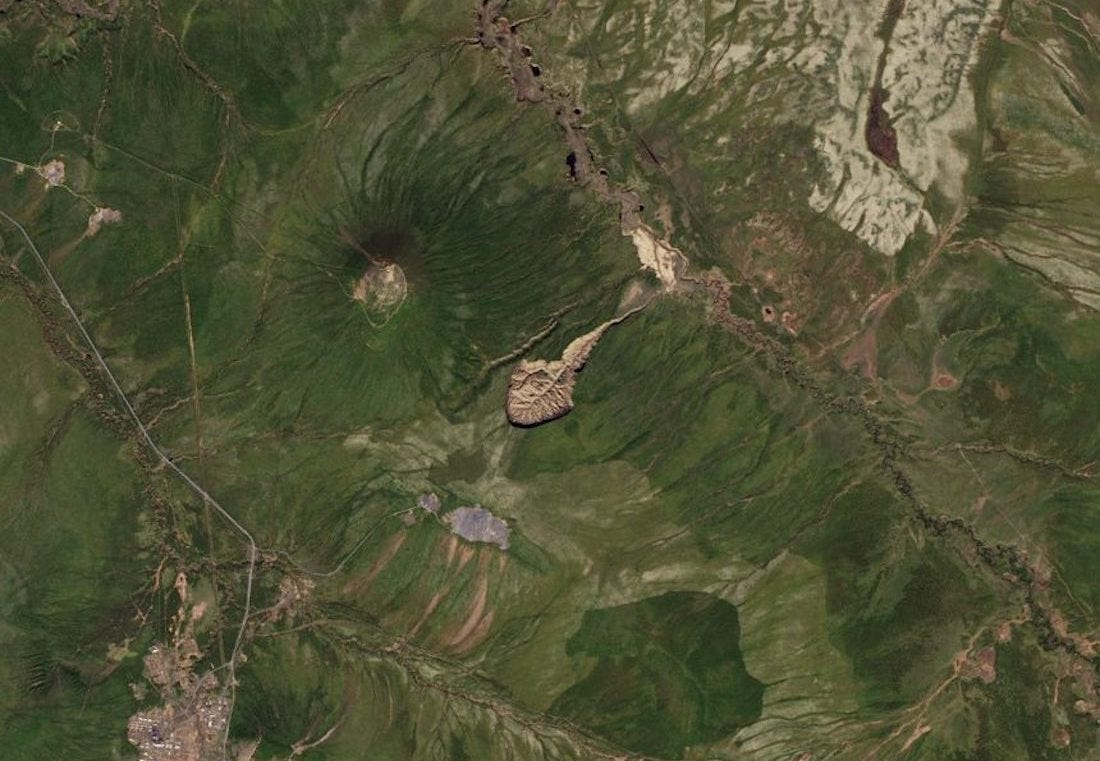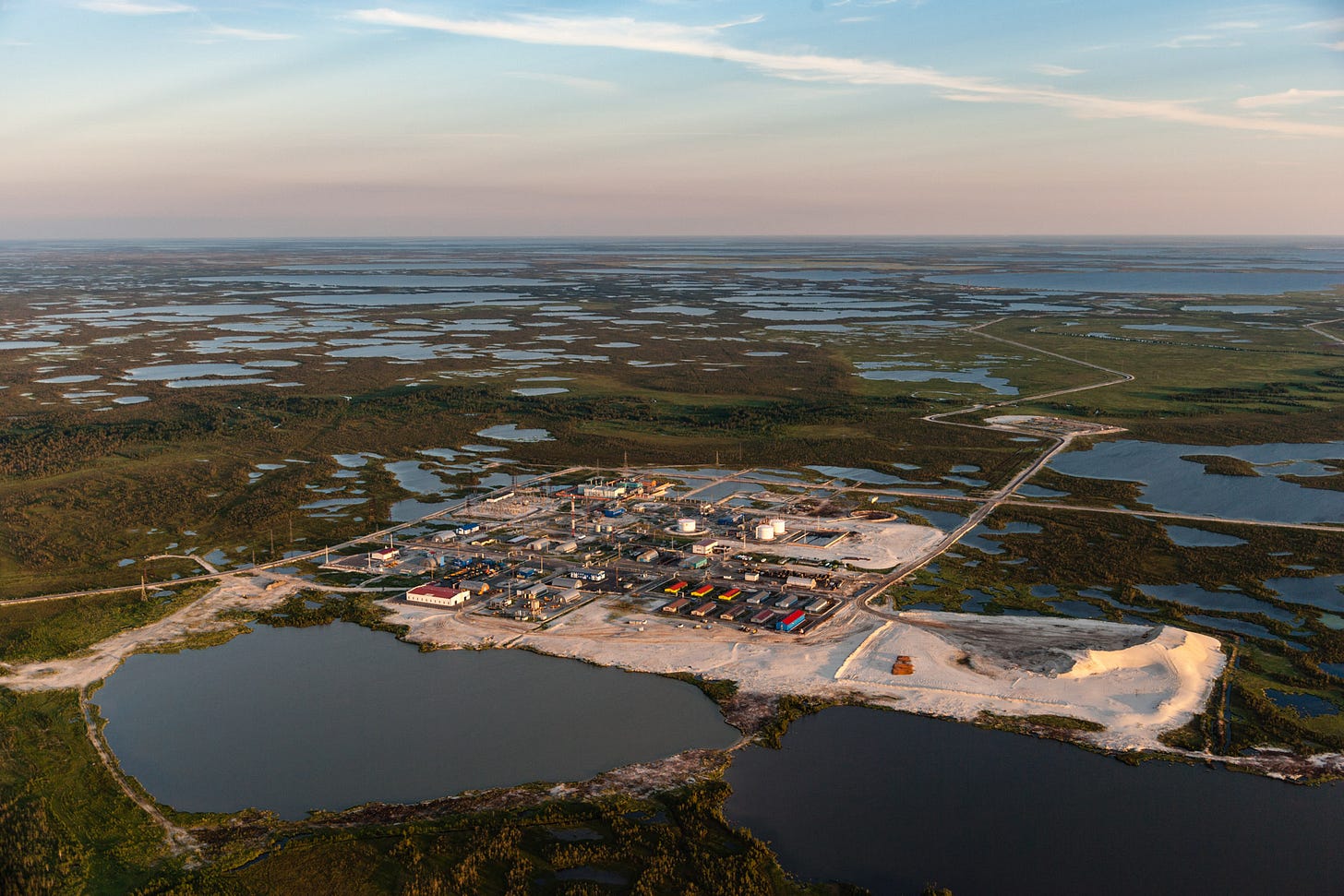
The Batagay or Batagaika crater in Siberia often referred to as the Doorway to the Underworld or the Gateway to Hell is a permafrost megaslump in Yakutia, Russia. Dimensions vary by source, but the site covers around 192 acres (78 hectares) and stretches two thirds of a mile (one kilometer) in length. Logged of trees in the 1960s, its walls reach a depth of around 180 feet (55 meters) and expose 650,000 years of geologic history. Since first spotted in the 1960s by surveillance satellites, the crater has grown from an insignificant gully to a massive depression at an accelerating rate. According to Sarah Cadieux, Sr. Lecturer and Associate Director of Environmental Science of Rensselaer Polytechnic Institute, the crater area increased by almost three times from 1991 to 2018.
The Batagaika crater isn’t a crater at all, it’s a retrogressive thaw slump, a type of terrain called thermokarst that occurs in areas underlain by permafrost. No longer cooled by forest cover, the slump has become a self-sustaining feedback loop, a portion of the ecosystem which has tipped into a new state. This is not an isolated case, but rather a rapidly growing problem in the Arctic as it warms three to four times the rate of the rest of the planet since 1979.
Called Arctic or polar amplification, this phenomenon is a well established fact measured by instruments, confirmed in climate computer models, and reinforced by paleoclimate records. Powerful anecdotal evidence occurred in the scorching heatwave of 2020 that saw the Russian town of Verkhoyansk which lies north of the Arctic Circle hit a stunning 38° C (100.4° F) on June 20. 2020 also saw overall temperatures in the Siberian basin rise to nearly 11° F above normal, shocking scientists and releasing ancient methane not from ancient organic material, but from limestone. Elevated methane in wetlands was expected, but not from outgassing rock.
A year later in 2021 Europe’s climate change service Copernicus Sentinel satellites recorded 118° F (48° C) in the Sakha Republic of Arctic Siberia, and records continue to fall with temperatures over 100° F in 2023 as reported by CNN.

Copernicus also reported that 2020 was a record year for Wildfires in Arctic Siberia emitting 58 million tons of carbon in 2020, breaking records dating to at least 2003, the start of Copernicus Atmosphere Monitoring Services. 2020 was also double the amount of emissions in 2019 (29 million tons), itself a record year.
Siberian wildfire carbon emissions 2003-2020
Permafrost defined
Permafrost is defined as any ground below the Earth’s surface that has been continuously frozen for at least two consecutive years. However, most permafrost dates back at least thousands or hundreds of thousands of years ranging from three feet (one meter) to 5000 feet (1,500 meters) in depth.
The most massive regions of permafrost exist in the Alaska, the Canadian Arctic, Siberia, Iceland, the Tibetan Plateau, Scandinavia and parts of Greenland. Permafrost also extends into the boreal forest ring around the Arctic in Canada, Alaska, and Russia. Permafrost accounts for 65 percent of Russian territory (Moscow Times article on its collapsing a state), 50 percent of Canada, and 80 percent of Alaska. Around 20 percent of the Earth’s land is permafrost, about 9 million square miles (22.8 million square kilometers), equivalent to the size of North America.
When permafrost melts it causes billions of dollars in infrastructure damage, and often brings catastrophic environmental disasters as well, but what is far more frightening is the massive amount of organic matter sequestered that is already releasing carbon dioxide (CO2) and methane (CH4). There’s a huge amount of carbon stored in permafrost, estimated at 1,400 gigatons from this article from Yale School of Environment to 1,500 gigatons on the MIT Climate Portal, either representing twice as much as the atmosphere currently contains. These closely agreed upon estimates make it clear the GHGs set to escape the Arctic represent an existential threat to life on the planet as we know it.
Permafrost thaw, a triple threat tipping point
In climate science, a tipping point is a critical threshold that, when crossed, leads to large, accelerating and likely irreversible changes in the climate system. There are numerous tipping points identified in global warming studies as we inexorably proceed toward permanently exceeding an average global warming temperature of 1.5° C above pre-industrial temperatures. 1.5° C of warming is locked in, but worse, the majority of climate scientists agree this figure will go far higher. Nearly 80 percent of hundreds of climate scientist respondents in a survey on The Guardian associated with the authoritative Intergovernmental Panel on Climate Change (IPCC), expect at least 2.5° C of global heating, with nearly half anticipating 3°C (5.4° F) by 2100.
Sixteen tipping points have been identified depending on temperature rise, but only the most immediate need be of concern. This article speaks to the Arctic region, its adjacent boreal forests, and the thawing of permafrost and polar ice melt that affects the Atlantic Meridional Ocean Current (AMOC).
I’ve already touched on the massive amount of carbon and methane which could be released, now let’s touch on AMOC. The Arctic ice sheet is rapidly melting as is the Greenland ice sheet at an astonishing 30 million tons of ice an hour as reported in Carbon Brief, The Guardian, and CBC, with the actual study here. This ever faster melt is leading to a Blue Ocean Event (BOE), a time when the Arctic Ocean is ice free in the summers. This will occur by the 2030s on our current path. As dark ocean water dominates, absorbing heat rather than reflecting it back into space as ice does, Arctic melt is hastened and speeds the release of greenhouse gasses.
Climate tipping points

The weakening Atlantic Meridional Ocean Current

As if all of this isn’t frightening enough, another terrible possibility looms, the release of ancient viruses for which we have no defense.
Permafrost and zombie diseases
In the summer of 2016, a heatwave in Siberia raised temperatures 10° C above normal. In some places land thawed forming pools of methane leaching water and in other areas fires raged over parched grasslands. A long frozen reindeer carcass that died from an anthrax plague seventy-five years earlier was exposed and thawed. Anthrax is a microbe that turns into a spore in the cold. When conditions warm, it transforms back into an active, infectious state again. Bacillus anthracis, the bacteria that cause anthrax, are capable of surviving in the soil for centuries.
For the first time since 1941, anthrax struck western Siberia. Thirteen people were hospitalized, including four children, and a 12-year-old boy died. The disease claimed 2,000 reindeer, and the herders were quarantined.
Equally, disturbingly, flu and smallpox which killed more than 50 million people in 1918 remain buried in areas of the warming tundra.

The climate emergency is indisputable, now. We must pull our money out of banks funding fossil fuel development (list here), petition congress to stop subsidizing the industry, $7 trillion in 2022, and stop Trump and Project 2025 in November whose detailed plans will further unleash Big Oil and dismantle environmental protections amidst its agenda to destroy democracy. Our backs are to the wall. It’s now or never.





Good factual article. We can no longer allow governments to ignore this
It may also be helpful to clarify what is meant by illness and disease and how modern medicine has completely misunderstood them.
The presentation of symptoms is the healing, the re-balancing and the expulsion of both external toxins and the products of internal stress.
There are only a small number of ways that the body can do this; through its orifices and skin and by fever, inflammation, mucus, cough, tiredness (stimulus to rest) and rapid cell division.
There will be ethnic differences in the bodies ability to rebalance depending on socio-economic factors. There may also be differences in the extent to which they have faith in doctors and thus the extent of exposure to harmful and possibly fatal treatments. After receiving a 'diagnosis' of one disease with one cause (ridiculous!) or a positive test result for an arbitrary amount of sequences or proteins never shown to come from a pathogenic entity-some may submit to forced ventilation, AZT or remdisivir etc.